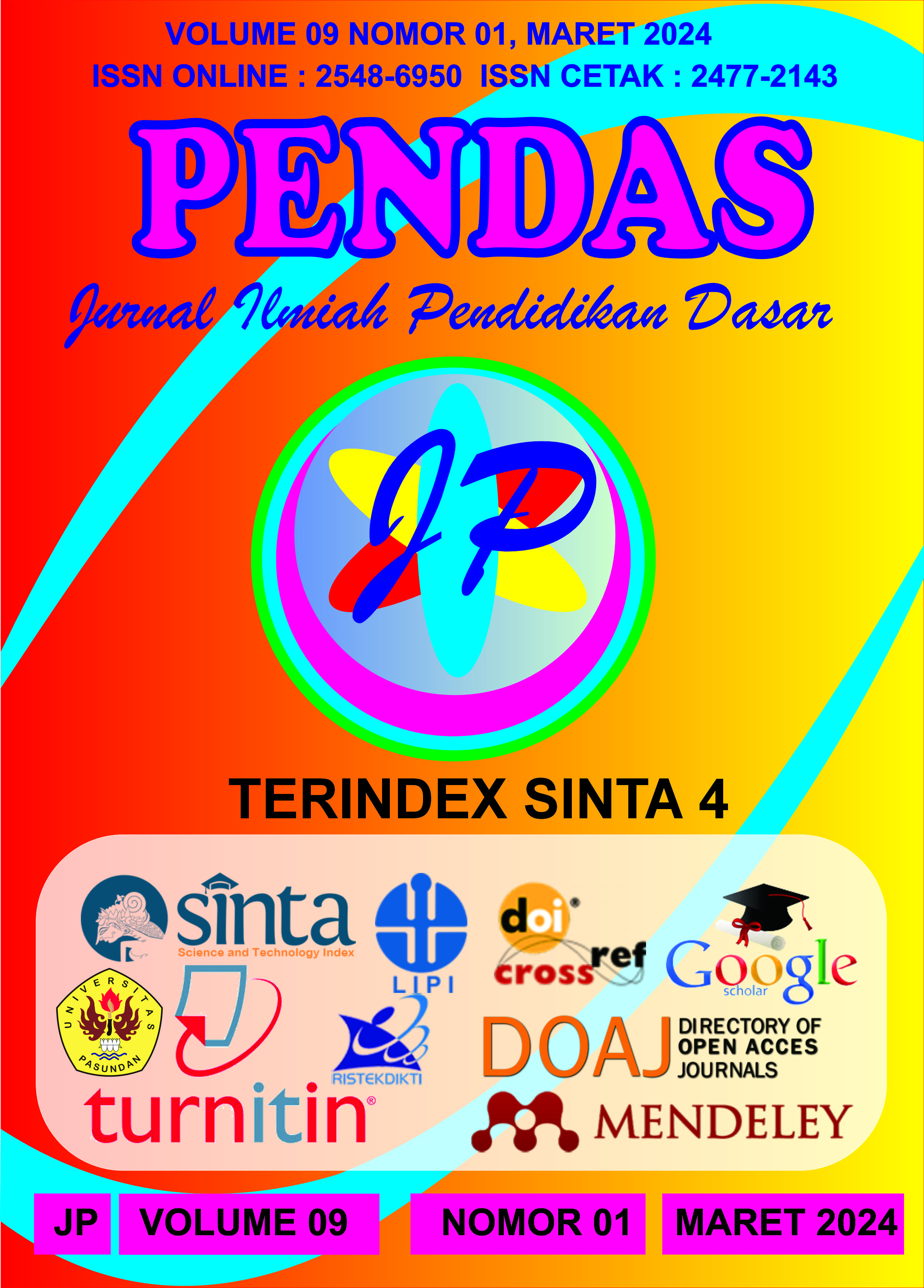STUDI KASUS POLA KELEKATAN AMAN DENGAN IBU PADA KORBAN PERUNDUNGAN DI SEKOLAH DASAR
DOI:
https://doi.org/10.23969/jp.v9i1.11993Keywords:
bullying; secure attachment; victimAbstract
The aim of the study on the case of secure attachment patterns with mothers occurring in elementary school children is to deepen the understanding regarding bullying victims at Muntilan Public Elementary School, specifically students who exhibit an excessively secure attachment pattern with their mothers as they enter the elementary school stage. The subjects of this study are 4 students displaying secure attachment patterns with their mothers, 4 classroom teachers, and 4 parents of these students. The study's object is the pattern of secure attachment with the mother. This study utilizes an in-depth qualitative approach to comprehend, analyze, and describe the existence of attachment patterns with mothers in students that continue to develop into the elementary school years. Data is gathered through observation, interviews, tests, field notes, and documentation. An excessively secure attachment pattern with the mother can lead to negative impacts on students, such as experiencing bullying. The study results indicate that an excessively secure attachment pattern with the mother becomes one of the triggering factors for bullying. After gaining adequate understanding through this study, the school principal and teachers can subsequently engage in consistent bullying anticipation and prevention measures.Downloads
References
Efstratia, Douladeli. (2014). Experiential Education Through project based learning. Procedia-social and behavioral sciences, 52, 1256-1260.
Gulen, S. (2018). Determination of the effect of STEM-integrated argumentation based science learning approach in solving daily life problems. Word Journal on Educational Technology, 10 (4), 95-114.
Ghozali, I. (2016). Aplikasi Analisis Multivariate dengan Program IBM SPSS 23 . Edisi 8. Cetakan ke-8. Semarang : Badan Penerbit Universitas Diponegoro. 2011. Gitantri, F. (2012). Penerapan P
Hong, H., Lin, P.Y., Chen, B., & Chen N. (2019). Integrated STEM Learning in an Idea Centered Knowledge-Building Environment. University of Minnesota. 28(1), 63-76.
Liwa Ilhamd, Mohammad. Novita, Desi. Nur Kholifatur Rosyidah, A. P. M. P. I. T. T. K. B. K. I. S. (2020). Pengaruh Model Pembelajaran Inquiri Terbimbing Terhadap Keterampilan berpikir kritis IPA SD. Jurnal Ilmiah KONTEKSTUAL, 13(1), 104–116.
Riti, Y. U. R., Degeng, I. N. S., & Sulton, S. (2021). Pengembangan Model Pembelajaran Berbasis Proyek dengan Menerapkan Metode Design Thinking untuk Meningkatkan Keterampilan Berpikir Kritis Siswa Dalam Mata Pelajaran Kimia. Jurnal Pendidikan: Teori, Penelitian, Dan Pengembangan, 6(10), 1581. https://doi.org/10.17977/jptpp.v6i10.15056
Hairida, H. (2016). The effectiveness using inquiry based natural science module with authentic assessment to improve the critical thinking and inquiry skills of junior high school students. Jurnal Pendidikan IPA Indonesia, 5(2), 209–215. https://doi.org/10.15294/jpii.v5i2.7681
Bybee, R. W. (2013). The case for STEM education: Challenges and opportunity. Arlington : National Science Teachers Association (NSTA) Press.
Ismawati, E., & Amertawengrum, I. P. (2023). Portrait of Education in Indonesia:Learning from PISA Results 2015 to Present. International Journal of Learning, Teaching and Educational Research, 2(1), 321-340.
Mahanal, S., Zubaidah, S., Bahri, A., & Dinnurriya, M. S. (2016). Empowering students’ critical thinking skills through Remap NHT in biology classroom Empowering students’ critical thinking skills through Remap NHT in biology classroom. AsiaPacific Forum on Science Learning and Teaching, 17(2), 11.
Novianti, Elisabeth Irma. Sennen, Eliterius. Supardi, Kanisius. Integrasi Pendekatan STEM (Science, Technology, Engineering and Mathematic) Untuk Peningkatan Keterampilan Berpikir Kritis Siswa Sekolah Dasar, 11(1). Jurnal Scholaria. doi: https://doi.org/10.24246/j.js.2021.v11.i1.p11-22
Parreira, P., & Eric, Y. (2018). Experimental design laboratories in entroductory physics courses: enhancing cognitive task and deep conceptual learning. Physics Education. 53
Rahayu, Hafitriani. Purwanto, Joko. Hasanah, Daimul. (2017). Pengaruh model pembelajaran Project Based Learning (PJBL) terhadap kemampuan berpikir tingkat tinggi siswa. Jurnal Ilmiah Pendidikan Fisika-COMPTON, 4 (1).
Stephanie, M.S., Eric, E.P.B. (2019). Developing student 21st Century skills in selected exemplary inclusive STEM high schools. International Journal of STEM Education. p.1-15. https://doi.org/10.1186/s40594-019-0192-1
Sugiono, P. . (2014). Metode penelitian pendidikan pendekatan kuantitatif.pdf. In Metode Penelitian Pendidikan Pendekatan Kuantitatif, Kualitatif Dan R&D.
Wijaya, A.D, dkk. 2015. Implementasi Pembelajaran Berbasis STEAM (Science, Technology, Engineering, Art, Mathematics) Pada Kurikulum Indonesia. Prosiding Seminar Nasional Fisika dan Aplikasinya
Wulandari, Adelia dkk. 2023. Pengaruh Model Pembelajaran Project-Based Learning Berbasis STEM Design Thinking Terhadap Keterampilan Berpikir Kritis Siswa Sekolah Dasar. Prosiding NCOINS.
Yunianto, Tri dkk. 2023. Pengaruh model pembelajaran PJBL terintegrasi STEM terhadap keterampilan berpikir kritis pada mata pelajaran IPAS kelas IV MIN 2 kota madiun. Prosiding Konferensi Ilmiah Dasar.
Downloads
Published
Issue
Section
License
Copyright (c) 2024 Pendas : Jurnal Ilmiah Pendidikan Dasar

This work is licensed under a Creative Commons Attribution 4.0 International License.



















